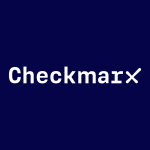What is our primary use case?
We utilize it to scan our in-house developed software, as a part of the CI/CD life cycle. Our primary use case is providing reporting from Veracode to our developers. We are still early on in the process of integrating Veracode into our life cycle, so we haven't consumed all features available to us yet. But we are betting on utilizing the API integration functionality in the long-term. That will allow us to automate the areas that security is responsible for, including invoking the scanning and providing the output to our developers so that they can correct any findings.
Right now, it hasn't affected our AppSec process, but our 2022 strategy is to implement multiple components of Veracode into our CI/CD life cycle, along with the DAST component. The goal is to bridge that with automation to provide something closer to real-time feedback to the developers and our DevOps engineering team. We are also looking for it to save us productivity time across the board, including security.
It's a SaaS solution.
How has it helped my organization?
Our needs are primarily foundational and Veracode provides the efficiencies that we need.
The product is being used to replace another solution and we recognize in our early implementation that Veracode DAST is identifying more vulnerabilities in application code than our previous solution did.
Also, at this juncture, I have received no feedback of false positives from our development team. It seems to be fairly good in that regard and probably has minimal false positives. We haven't gotten feedback one way or another from developers about how the false positive rate affects their confidence in the solution, but if there were significant false positives, or even one in our environment, we would certainly be engaged with the vendor to discuss it. But that has not been the case so far.
Overall, I think that if it's implemented correctly for the business, Veracode is highly effective in preventing vulnerable code from going into production.
What is most valuable?
The visibility into application status helps reduce risk exposure for our software. Today, any findings provided by the DAST are reviewed by the developers and we have internal processes in place to correct those findings before there can be a release. So it absolutely does prevent us from releasing weak code.
What needs improvement?
Because we're so early in our implementation, we have had minimal feedback in terms of room for improvement. We have seen some minor things within the interface itself that we would love to see some improvements on.
One of those is scheduling, which can be a little difficult. For instance, if you set up recurring scheduled scans and a developer comes in and says, "Hey, I have this critical release that happened outside of our normal release patterns and they want you to scan it," we actually have to change our schedule configuration and that means we lose the recurring scheduling settings we had. We have to change that over to a one-time scan. It would be lovely if we could run ad hoc scans without changing our recurring schedule. That can be a little painful because it happens a lot, unfortunately. I think that will change, so I don't want to knock them completely. Right now, we run a manual configuration setup, but once we integrate this via API into our CI/CD life cycle, that issue should go away.
For how long have I used the solution?
We have been using Veracode for four months.
What do I think about the stability of the solution?
So far, my impression of Veracode's stability is very good.
What do I think about the scalability of the solution?
It appears to be very efficient when it comes to scalability. We're a smaller shop, so I may have a different interpretation of what scalability is. We're under 100 licenses at this point, but so far we have had success.
How are customer service and support?
There are some great, positive things about Veracode and the relationship they try to form with the clients.
Regarding tech support, I've mostly had positive engagements, especially because they have one engineer who is, frankly, a rock star. I cross my fingers that I get him every single time because he's very thorough, he's educational, and he is quick. For the most part, it has been positive, especially when I do get assigned that particular engineer. I had a little frustration in the early days because they didn't quite understand the situation, but that was the only time I had a negative engagement with Veracode on support.
How would you rate customer service and support?
Which solution did I use previously and why did I switch?
Our previous solution was difficult to configure. Setting up the login process was very difficult, as it was tied to your browser and there were a lot of hoops you had to jump through. The reporting was also hard to follow sometimes and didn't provide a good view into previous findings versus new findings. That made things difficult too. Once we did the evaluation of our old solution against Veracode, it was very clear that it was finding fewer vulnerabilities, which lowered our confidence level in that tool.
How was the initial setup?
The initial setup was straightforward for us, and minimal, since it is a SaaS product.
The major component is being granted access to the tool. They then engage a customer success manager to help you understand and give you an overview of the interface itself and to walk you through some example setups. We were able to work with the CSM to configure a couple of our production scans. He did some hand-holding for us through the process until we felt that we understood it enough and had repeated it enough to do it on our own. He also provided detailed reviews of reporting, et cetera.
Deployment took less than an hour, although we have a small environment today. It would, obviously, take much more time with a larger organization.
Because we were migrating from one solution to another, it was an easy migration path. We just needed to collect the information from the previous solution and replicate that within Veracode.
One thing that can be difficult—and it was in our previous solution—is creating the login component for the scans. The learning about how to create that was a little daunting at first, because you have to create what they coin a "login script," but it is really just a recording of a login. Once you get it down, creating those "login scripts" takes less than a minute.
One of the struggles we have had with that recording process is that we have had to redo it more often than not if our developer has changed, even in some minor way, the way they collect information for the login. That does affect the script. That can be a little frustrating at times, but unfortunately, it is a known behavior apparently. It's just the nature of the beast if you do make any modifications to login.
As for admin of the solution, we have one person involved and it probably takes a quarter of their time or less. There is no maintenance since we have the SaaS product, other than ensuring that the scans that we have set up are still scanning successfully and that we don't have any failures.
What was our ROI?
Veracode has not reduced the cost of AppSec in our organization yet, but that's only because we are very early in the implementation.
Which other solutions did I evaluate?
We primarily looked at Netsparker as an alternative.
What other advice do I have?
My advice would be to understand how you want Veracode to function within your environment from a workflow perspective. That way, you can potentially start taking advantage of a lot of the functionality it offers out of the gate, which is something we are not doing yet. We're on a delay until 2022. That is really important.
Also, in introducing the product to those who will be receiving the output, the findings reports, it would be great to include them in some conversation and collaboration on the move down that Veracode path or, frankly, any path that leads to scanning applications.
Veracode provides guidance for fixing vulnerabilities, although we haven't actually had to utilize that. But as a part of our licensing model, they provide us a certain number of opportunities to engage with someone for consultation.
We are not focusing on using the solution to enhance developer security training right now, although it is a part of our roadmap. We are banking on being able to utilize that aspect of Veracode because we are an Agile environment and we want developers to be able to engage that training. Also, when there are findings, we want our developers to get that assistance in real-time. That is a part of our 2022 strategy.
We have started out with a much more narrow policy for ourselves because we are just learning about how the tool works and how it functions. But we did evaluate some of Veracode's policies, out of curiosity, and they seem to be very aligned and very helpful. However, I would not be able to speak to whether they are on the money for utilization against compliance frameworks.
Disclosure: PeerSpot contacted the reviewer to collect the review and to validate authenticity. The reviewer was referred by the vendor, but the review is not subject to editing or approval by the vendor.






















